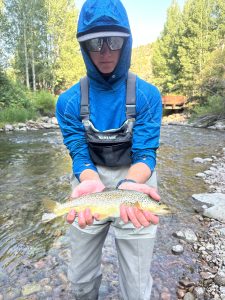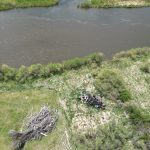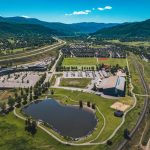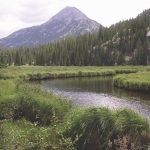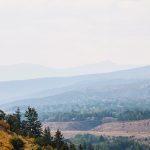New book ‘Powder Days’ uses Vail and Beaver Creek as a backdrop
Heather Hansman explores ‘dirtbag culture’ in ski towns

In “Powder Days” by Heather Hansman, published in late 2021, readers are treated to a female perspective on the ski-bum lifestyle, with the Vail area and Pazzo’s in Avon serving as one of the book’s major settings.
This is indeed unique, but locals who read the other ski industry book published in 2021 which featured Vail and Beaver Creek, “Wookie Is Not His Real Name,” were also treated to a female perspective from local author Laura Lieff, and were also able explore ski bum culture through the work. Interestingly, “Wookie Is Not His Real Name” also featured Pazzo’s in Avon as a location setting.
But while Laura Lieff focused on one ski bum in particular in “Wookie,” Hansman details the lives of several ski bums in “Powder Days.” Her mission is to find answers to two major questions: Can you still be a ski bum, and should you try?
Hansman journeys from Big Sky, Montana, to Ski Santa Fe to Mad River Glen in Vermont and many places between, but returns often to the Vail area and Beaver Creek, where she spent her first season as a ski bum in 2005-06.
She describes Beaver Creek as “the antithesis of subtle and soulful,” and said at her resort job she was paid $8.50 per hour to “scan lift tickets and listen to vacationers with their helmets on backward question my intelligence,” she writes.

Support Local Journalism
She describes the Beaver Creek guests as “gaper visitors” and says her colleagues and her would make “games out of dismissing them: what was the most awkward thing you could say to a guy who tried to grope you when you scanned his pass?”
At the close of the ski day, “I’d scrape my sweaty helmet hair up into a bun, peel off my long underwear, hope I’d remembered a real bra to wear under my Pazzo’s T-shirt, and bust down the hill as fast as possible to clock in at the restaurant.”
Luxury veneer removed
Hansman’s description of Beaver Creek and her work routine is a part of a deliberate effort to remove the luxury veneer from the ski lifestyle and get to messier parts of the culture which aren’t as easy to talk about.
And she gets to it all, describing classism, racism, sexism, corporatization, mental health issues and the many other uncomfortable topics which shape lives in ski towns.
We learn new words to describe feelings in ski towns, like “solastalgia” — a mashup of solace, nostalgia, and desolation — which Hansman translates to mean “the feeling of the world changing around you, when you were told it would be stable.”
Other times, however, readers receive a repetition of mantras. Ten pages into the book, readers have already seen the word “dirtbag” used five times. We learn about dirtbag skiers, dirtbag secrets, dirtbag living, dirtbag culture and dirtbag fantasy. When ski towns transitioned from seasonal resorts to year-round towns, “dirtbags started to settle down,” Hansman tells us.
The book doesn’t have a bibliography, and for the most part, doesn’t need one, as Hansman does a good job of citing her sources within her text. But there are times when the lack of bibliography is frustrating, when Hansman writes things like “studies have shown …” and “Katz has publicly said …”
The lack of bibliography also makes Hansman’s use of facts less believable. Hansman writes that “US skier visits have been in the 50-million-a-year range since the National Ski Area Association starting counting,” but according to National Ski Area Association stats, the last decade and a half has seen an average of more than 56 million skier visits per year in the U.S., with five seasons recording more than 59 million skier visits.

Vicarious dirtbagging
Colorado locals, or those who spend a lot of time in the places mentioned by Hansman, might question some of her other claims, as well.
Hansman describes Basalt as a place that’s so far away from Aspen that it doesn’t sound like a real town to an outsider. She implies that the Colorado Gators Reptile Park near Mosca is reserved for albino specimens only. She says the only groomed run off the Grouse Mountain lift at Beaver Creek is the Birds of Prey downhill course. She says she lived in a house which was “right at the foot of the Minturn Mile,” but also says the house was across the street from an always-lit police station.
And Hansman says last January she visited Pazzo’s and saw a person named Zach who has worked there since 2005 when she also worked at Pazzo’s. I wasn’t able to find Zach, and a longtime bartender at Pazzo’s told me it has been years since a person named Zach who fits Hansman’s description has worked there.
Technicalities aside, the book gives you a feeling of what it would be like to be a dirtbag in some of the country’s most desirable locations, which is not an easy task. And she does find locations which offer a contrast to what she calls the “mountainside expanse of wide-hipped mega cabins” that is Beaver Creek.
“Silverton, with its single lift and lack of infrastructure, is the antithesis of something like Vail’s widespread conglomeration,” Hansman writes. “It’s refreshing in its simplicity and realness.”
Hansman closes her exploration in Silverton, where she finds a perfect metaphor for ski bum life. In between storms, when a road out of town opens for the first time in days, she receives a text (spoiler ahead).
“You know you’re welcome to stay,” the text reads. “But this might be a good chance to get out.”
“Powder Days: Ski Bums, Ski Towns and the Future of Chasing Snow” is available in e-book, audio book and classic hardcover from Hanover Square Press.


